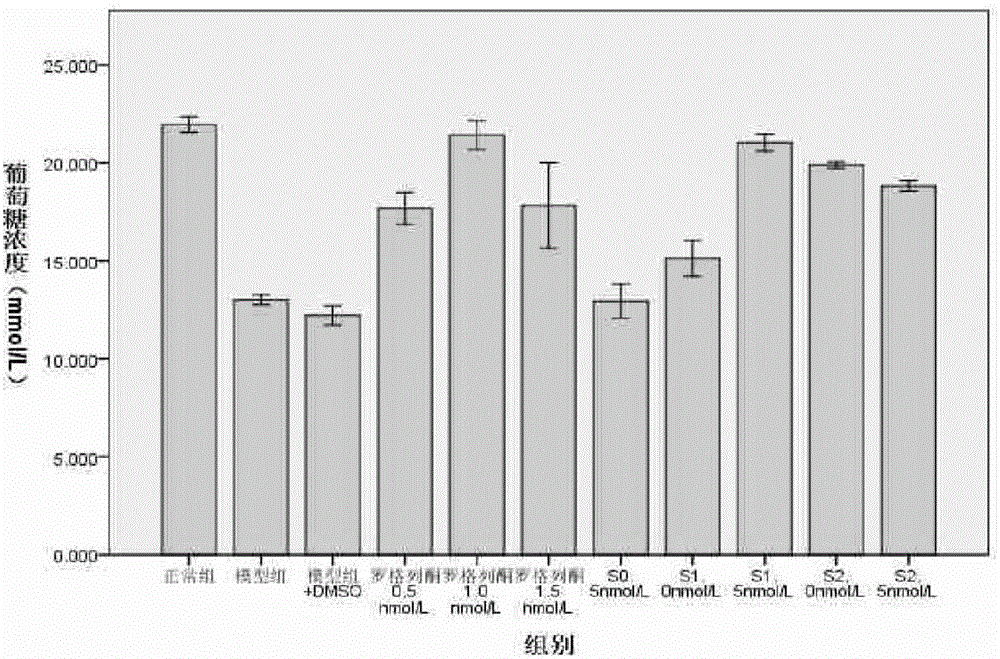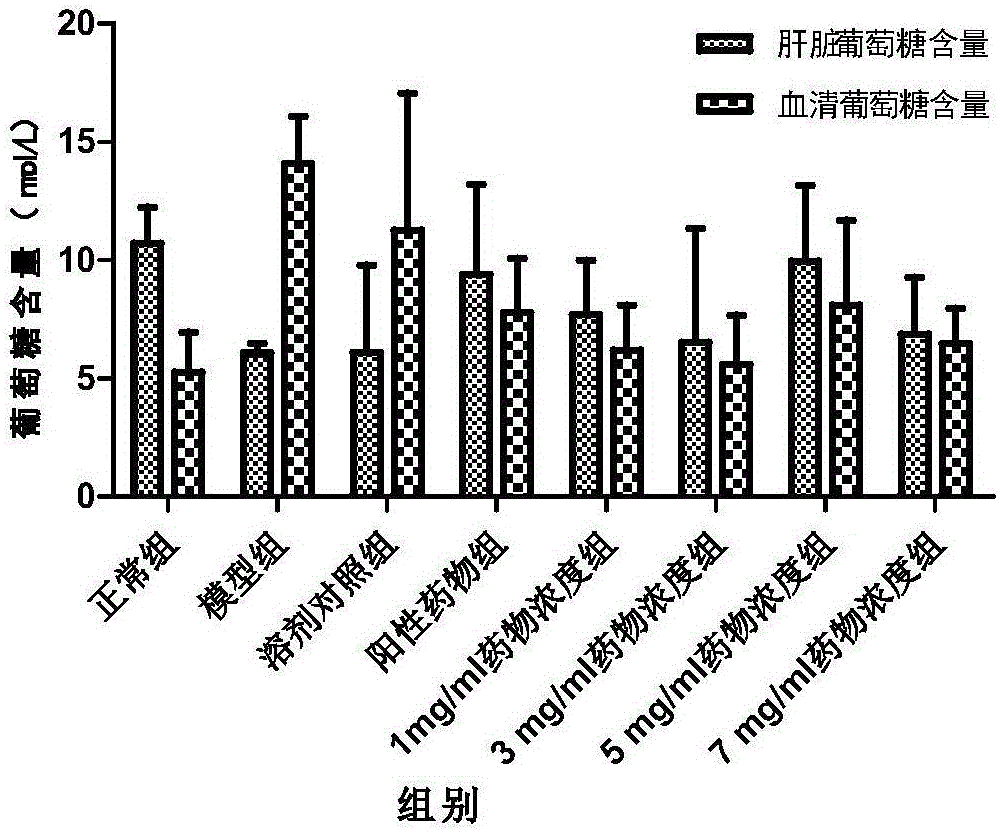Application of salmeterol in medicine for treating type 2 diabetes and insulin resistance
A technology for insulin resistance and type 2 diabetes, applied in the field of medicine, can solve problems such as liver dysfunction
- Summary
- Abstract
- Description
- Claims
- Application Information
AI Technical Summary
Problems solved by technology
Method used
Image
Examples
Embodiment 1
[0021] 1. Construction of 3T3-L1 cell insulin resistance model:
[0022] (1) After digesting 3T3-L1 cells in good growth state, use 3*10 4 cells / mL were seeded into 6-well plates at a density of 2 mL / well, and cultured in basal medium. Change the medium once every 36 hours. After changing the medium twice, the cells can reach 90%-100% cell density, and continue to culture with the basal medium to keep the cells in a state of contact inhibition.
[0023] (2) Two days after confluence (contact inhibition) (DAY0), change the cell induction medium and culture for two days, and decide whether to change the medium according to the color of the cell culture medium. Generally, change the culture medium once every 24-36 hours.
[0024] (3) Two days after induction medium 1 culture (DAY2), change to induction medium 2. After two days of culture, decide whether to change the medium according to the color of the cell culture medium. Generally, change the culture medium once every 24-36 h...
Embodiment 2
[0038] 1. Construction of SD rat type 2 diabetes model:
[0039] (1) 80 SPF male SD rats with a body weight of 120 ± 20 grams. After 3 days of trial feeding with the basic rat diet, 7 were randomly selected as the model control group, still fed with the basic rat diet, and the other rats were fed with the basic rat diet. Rats were fed with high-sugar and high-fat rat food, and all rats had free access to tap water. Drinking water was changed every day, feces were cleaned up every two days, and body weight was weighed and recorded every three days.
[0040] (2) After two weeks of feeding, the rats were fasted from food and water, and after fasting for 10 hours, the blood was collected from the tail vein, and the blood glucose of the rats was measured, and the results were recorded. Thereafter, fasting blood glucose was measured once a week, and body weight was still measured and recorded every three days.
[0041] (3) After feeding for 6 weeks, the rats in the model group wer...
Embodiment 3
[0057] 1. Total protein extraction from serum, liver, skeletal muscle and adipose tissue:
[0058] (1) One sample was randomly selected from each animal experimental group, and duplicate wells were set up for each sample, and the preserved serum, liver, skeletal muscle, and adipose tissue samples were taken out from -80°C for later use.
[0059] (2) Take out the animal tissue and put it directly into a mortar placed on an ice tray, add liquid nitrogen, quickly crush and grind the tissue block, add liquid nitrogen and grind again when the tissue is about to become soft, and repeat this three times.
[0060] (3) Grind into powder, weigh 40 mg to a 1.5 mL EP tube, add 400 μL of cell lysate, mix evenly with a shaker and place on ice.
[0061] (4) Oscillate once every 10 minutes, 40 seconds each time, and continue for 6-8 times. During this process, keep the low temperature and keep the protein unchanged.
[0062] (5) After lysing on ice, put it into a low-temperature high-speed r...
PUM
 Login to View More
Login to View More Abstract
Description
Claims
Application Information
 Login to View More
Login to View More - R&D
- Intellectual Property
- Life Sciences
- Materials
- Tech Scout
- Unparalleled Data Quality
- Higher Quality Content
- 60% Fewer Hallucinations
Browse by: Latest US Patents, China's latest patents, Technical Efficacy Thesaurus, Application Domain, Technology Topic, Popular Technical Reports.
© 2025 PatSnap. All rights reserved.Legal|Privacy policy|Modern Slavery Act Transparency Statement|Sitemap|About US| Contact US: help@patsnap.com



